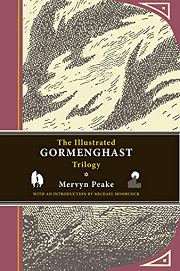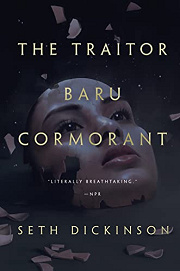Share your thoughts in a quick Shelf Talk!
The Gormenghast Trilogy by Mervyn Peake
In a crumbling castle of ritual and intrigue, an heir comes of age amid scheming nobles, eccentric tyrants, and labyrinthine traditions that refuse to die. Lush prose and eerie imagination turn every corridor into a dreamlike threat. The Gormenghast Trilogy is a gothic fantasy landmark for readers who savor atmosphere as much as plot.
Have you read this book? Share what you liked (or didn’t), and we’ll use your answers to recommend your next favorite read!
Love The Gormenghast Trilogy but not sure what to read next?
These picks are popular with readers who enjoyed this book. Complete a quick Shelf Talk to get recommendations made just for you! Warning: possible spoilers for The Gormenghast Trilogy below.
In The Gormenghast Trilogy, did you enjoy ...
... baroque, image-dense prose and labyrinthine, Gothic atmosphere?
The Shadow of the Torturer by Gene Wolfe
If Peake’s lush pages—those lingering passages on the crumbling corridors, Swelter’s steamy kitchens, and the solemn choreography of Gormenghast’s rituals—were what drew you in, you’ll love the way The Shadow of the Torturer envelops you in Severian’s elevated, antique voice. Wolfe’s sentences glow with the same ornate intensity, guiding you through the Matachin Tower, the sepulchral guild of torturers, and the uncanny Botanic Gardens. As Titus drifts along ramparts or Fuchsia broods in her attic, so Severian wanders a decaying, half-forgotten city where memory, symbol, and architecture fuse into one haunting tapestry.
... a grotesque, exhaustively realized city-ecosystem of guilds, rituals, and byzantine institutions?
Perdido Street Station by China Miéville
If the codified ceremonies of Gormenghast—the Master of Ritual’s prescriptions, the ossified duties around Titus’s Earling, and even the fussy politics between Flay and Swelter—fascinated you, Perdido Street Station offers a similarly teeming world in New Crobuzon. You’ll trace Isaac Dan der Grimnebulin’s ill-fated experiment into the city’s capillaries: the Remade’s punishments, Parliament’s iron-fisted committees, the spider-god Weaver’s caprice, and the Construct Council’s clanking enclave. Like Steerpike slipping through kitchens and libraries to remake the castle’s order, Miéville’s characters navigate a civic organism so detailed it feels alive—especially when the slake-moths descend and the city’s web of deals tightens.
... dreamlike halls, living architecture, and a hermetic, uncanny setting?
Piranesi by Susanna Clarke
If you loved the way Titus roamed roofscapes, or how Fuchsia retreated to hidden attics while Gormenghast’s corridors seemed to think and breathe, Piranesi captures that same spell. Its House is an endless palace of statues and tides, a sublime maze where a gentle, meticulous narrator maps vestibules and catalogs wonders while corresponding with the enigmatic Other. The mood recalls the hush after the library burns—mysterious, elegiac, and slightly unreal—inviting you to lose yourself in a beautiful architecture that feels both sanctuary and riddle.
... a ruthless climber manipulating a rigid hierarchy from within?
The Traitor Baru Cormorant by Seth Dickinson
If Steerpike’s rise—from the kitchens to the very levers of the castle’s authority, orchestrating the library fire and courting influence among the Groans—was the hook for you, then The Traitor Baru Cormorant brings that same electric cunning to a different stage. Baru enters the Masquerade’s bureaucracy and weaponizes ledgers, trade, and policy to bend a conquered province, much as Steerpike bends the Professors, the Twins, and even Fuchsia to his designs. You’ll relish the precise, chilling maneuvers, the moral compromises, and the way a rigid system can be subverted from within.
... a patient, atmospheric unfolding where mood, place, and lineage matter as much as plot?
Little, Big by John Crowley
If the slow drift of Titus’s childhood—the rituals that mark seasons, the long shadows of the Groan lineage, and the way the castle itself seems to age alongside its people—enchanted you, Little, Big offers a similarly absorbing pace. You’ll settle into Smoky Barnable’s marriage to Daily Alice at Edgewood, a house of impossible rooms, while a family saga unfurls with subtle, fairy-haunted turns. Like Gormenghast’s rhythms between Swelter and Flay or the quiet pathos of Fuchsia’s retreats, Crowley’s story rewards lingering: the atmosphere deepens, secrets breathe, and wonder arrives softly.
Unlock your personalized book recommendations! Just take a quick Shelf Talk for The Gormenghast Trilogy by Mervyn Peake. It’s only a few questions and takes less than a minute.





